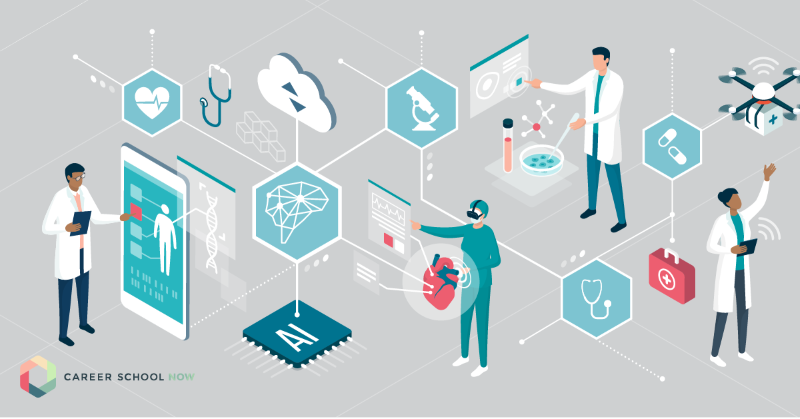The Future of Medical Administration: Trends and Developments to View
The Future of Medical Administration: Trends and Developments to View
Blog Article
Finest Practices in Medical Administration for Improving Effectiveness and Decreasing Prices
In the ever-evolving landscape of healthcare, the quest of finest techniques in clinical administration is critical for boosting effectiveness and curbing expenditures. By integrating sophisticated innovations such as digital health and wellness records and telemedicine, medical care providers can simplify operations and improve person care. However, innovation alone is not a panacea; maximizing resource appropriation and fostering collaborative interaction among treatment teams are similarly crucial (medical administration). As companies make every effort to balance top quality and cost, what methods should be focused on to accomplish these dual objectives? The answers to these concerns hold the trick to a more sustainable medical care system.
Leveraging Advanced Innovation
In today's quickly advancing medical care landscape, leveraging advanced innovation is no more optional yet essential for efficient medical administration. The integration of digital options right into health care systems has actually transformed the method facilities operate, improving procedures and boosting person treatment. Electronic Health And Wellness Records (EHRs) are crucial, giving thorough person data that can be accessed quickly by licensed personnel, therefore decreasing redundancy and reducing errors. By centralizing patient information, EHRs eliminate the demand for difficult documents and help with seamless interaction amongst doctor.
Telemedicine is one more technological advancement that has actually reinvented client communication. It uses benefit for both patients and health care professionals by allowing remote examinations, which can reduce the requirement for in-person check outs and optimize visit organizing. Furthermore, telehealth systems can extend health care accessibility to country or underserved areas, linking gaps in care distribution.
Additionally, the usage of Artificial Intelligence (AI) and maker knowing is coming to be increasingly common in anticipating analytics, allowing for very early discovery of potential health and wellness concerns and more informed decision-making. These innovations, when integrated efficiently, can enhance analysis precision and customize person therapy plans, eventually bring about enhanced medical care outcomes and functional effectiveness.
Optimizing Resource Allocation
By purposefully taking care of resources such as workers, tools, and financial resources, healthcare facilities can dramatically boost their operational performance, boost individual results, and decrease unneeded expenses. The very first step in maximizing source allocation involves performing a thorough evaluation of current properties and identifying locations where resources might be underutilized or overextended.
Focusing on resource allotment based on individual demands and solution needs is necessary. This involves straightening resources with high-demand locations, such as emergency treatment or specialized treatments, to ensure prompt and effective person care. Implementing versatile staffing models can additionally optimize labor sources by adjusting workers allocation in feedback to changing patient quantities. Additionally, welcoming telemedicine and other technical solutions can ease physical source restrictions by supplying alternative opportunities for patient-provider communications.
Economic resources ought to be thoroughly kept track of and alloted with tactical foresight to support both short-term functional needs and lasting institutional goals. This includes investing in training programs that improve team expertises and adopting energy-efficient practices that reduce operational costs (medical administration). Ultimately, a maximized source appropriation approach fosters a sustainable healthcare environment that is receptive, reliable, and monetarily sensible
Streamlining Operations Procedures
When medical care centers purpose to boost functional performance, enhancing process processes ends up being a critical focus. Efficient workflows minimize redundancy, remove unneeded actions, and improve control among healthcare specialists. This strategy not just speeds up service delivery yet additionally improves the high quality of client care.

Following, modern technology combination plays a substantial function in streamlining process. Applying electronic health documents (EHRs) and electronic physician order access (CPOE) systems decreases documents, minimizes human mistake, and guarantees details comes to all relevant employees. Furthermore, leveraging telemedicine systems can simplify person consultations and follow-ups, minimizing the pressure on physical framework.

Eventually, streamlined process cause set you back decreases and enhanced individual fulfillment, cultivating a more sustainable health care setting.
Enhancing Data Management
Building upon streamlined workflows, maximizing information administration visit our website ends up being an important component ahead of time medical care management. Efficient information monitoring systems are vital for preserving accurate person documents, enhancing decision-making, and ensuring conformity with regulative standards. By applying durable data monitoring options, healthcare centers can improve the quality of person care while at the same time decreasing operational expenses.
One key aspect of boosting data monitoring is the combination of advanced digital health and wellness document (EHR) systems. These systems facilitate the smooth exchange of patient info across various divisions, decreasing replication of tests and decreasing errors. A properly designed EHR system supports information analytics, enabling health care companies to identify patterns and make educated decisions relating to patient care.
In addition, protecting individual data is vital. Taking on extensive cybersecurity procedures, including encryption and normal audits, ensures the stability and discretion of sensitive information. This not just shields patients but likewise preserves the institution's credibility.
Buying staff training is another important variable. Educating health care specialists on data administration methods improves their capacity to properly utilize technology, resulting in improved client results. To conclude, boosting information management through advanced modern technology and comprehensive training is important for accomplishing effectiveness and expense decrease in clinical management.
Fostering Collaborative Interaction
An essential part beforehand clinical management is cultivating collective communication among health care experts. Effective communication is critical for ensuring smooth person treatment, enhancing treatment outcomes, and minimizing mistakes. By urging open discussion and sychronisation across multidisciplinary teams, healthcare companies can improve their operational effectiveness and minimize unnecessary prices.
Central to this method is the integration of communication technologies such as digital health records (EHRs) and safe messaging platforms, which facilitate the navigate to this site rapid exchange of crucial person info. These tools make it possible for health care service providers to access and share information in genuine time, ensuring that all employee are notified and aligned in their decision-making procedures. Routine group meetings and interdisciplinary rounds can better promote a society of collaboration and responsibility.
Educating programs concentrated on boosting communication skills are likewise essential. These programs can assist team develop the capability to convey information clearly and pay attention actively, therefore lowering misunderstandings and promoting an encouraging workplace. In enhancement, adopting standardized interaction methods, such as SBAR (Situation, Background, Evaluation, Referral), can streamline the exchange of info, making certain that crucial information are shared succinctly and effectively. Eventually, promoting joint communication results in enhanced health care distribution and price financial savings (medical administration).

Conclusion
Integrating sophisticated innovation, such as digital wellness documents and telemedicine, alongside optimized resource allotment and streamlined workflow processes, is important for improving performance in clinical management. Reliable information management and fostering collaborative communication among healthcare groups are crucial for minimizing redundancies and enhancing care quality. By focusing on preventive care and taking part in top quality renovation efforts, health care organizations can achieve significant cost savings and boosted person end results, right here therefore making certain lasting medical care shipment in an increasingly complex setting.
Report this page